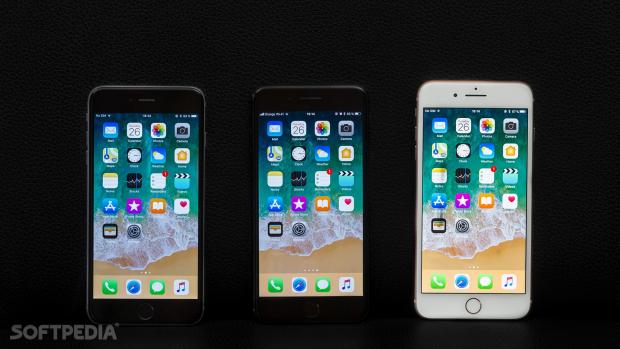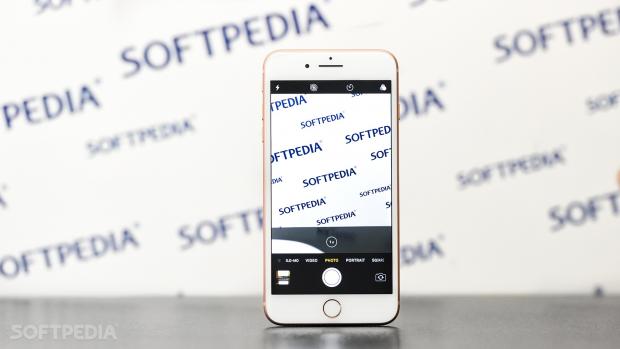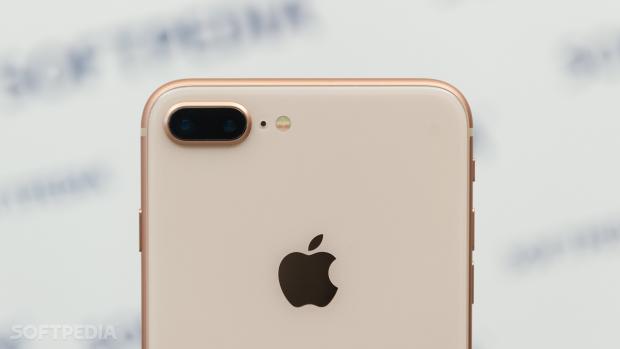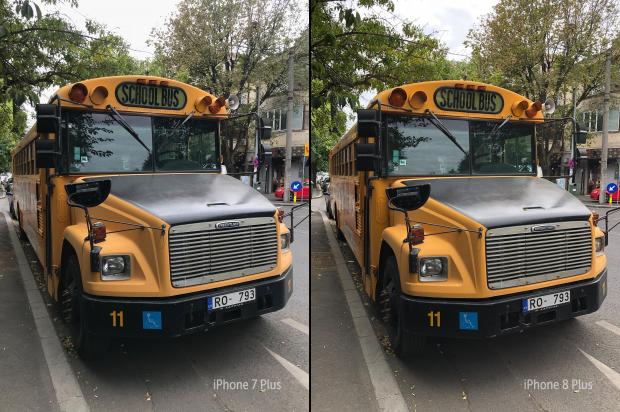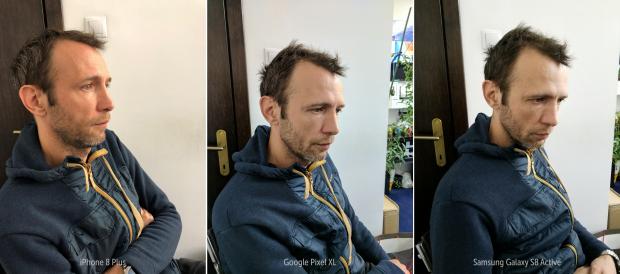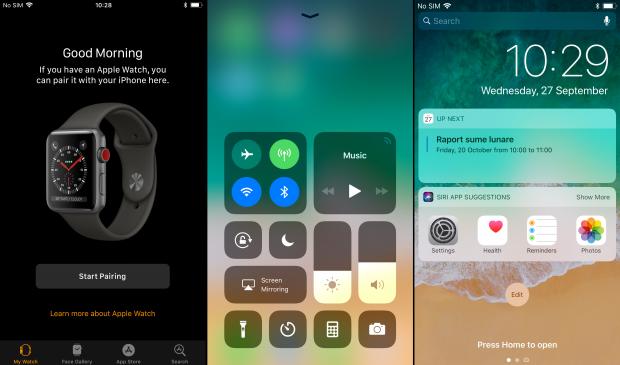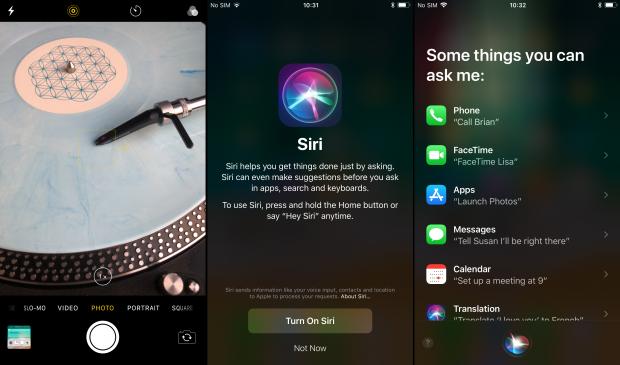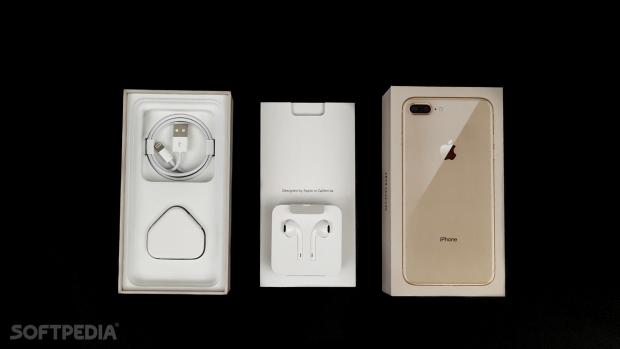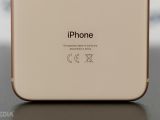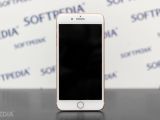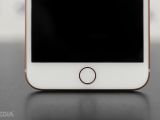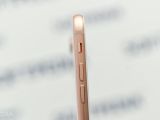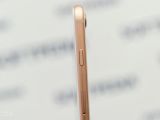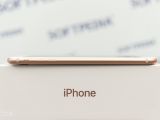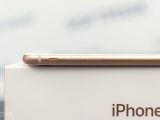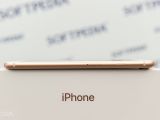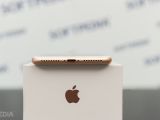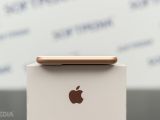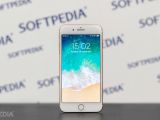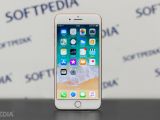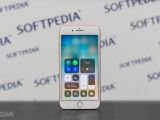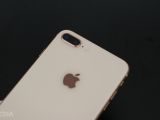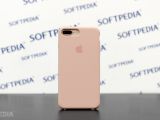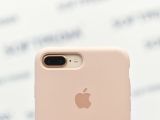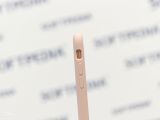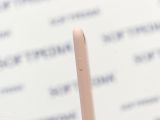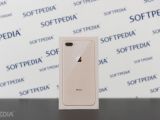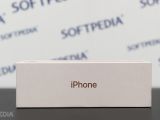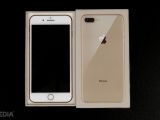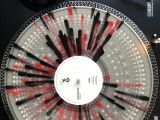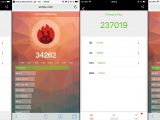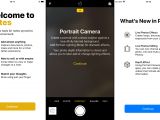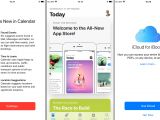It’s that time of the year again, when the new iPhone comes out. Except this year we get two new iPhones.
Well, sort of: while the iPhone 8 has already made its way to the hands of eager customers around the world, the iPhone X (which Apple wants all of us uncultured savages to pronounce “ten” not “x”) is working its way through delays and inevitable supply shortages.
Read on to see what the iPhone 7s 8 is all about.
Design & Build Quality
Yes, it’s true. The iPhone 8 looks almost exactly like the iPhone 7. And the iPhone 6s. And the iPhone 6. The new glass back does look great, especially on our Gold tester, and gives the smartphone a modern feel, which is a really strange sensation if you take into account the iPhone 4 had one back in 2010. Everything else is right where it was before, down to the button placement and size, Lightning port, speaker grilles, Touch ID/home button and so on.
One thing’s for sure, Jimmy Kimmel will once again be able to have a great time asking clueless people if they like “the new iPhone”.
The build quality is really solid all-around and more resilient to bending, thanks to the strong sheet of glass sourced from Corning (apparently it’s something better than Gorilla Glass 5, but there’s no specific information).
There’s no discernible difference in size when you hold the iPhone 8 Plus in your hand, although some people might notice it’s a little heavier (0.5 oz / 14 g). It also feels more grippy, which is a big plus, especially if you hate using a case.
Hardware Setup & Performance
As is now customary, the iPhone 8/Plus comes with an entirely new SoC (system-on-a-chip) called A11 Bionic. It marks the jump to a 6-core CPU with four efficiency cores and two performance cores. Also new is these cores’ ability to function concurrently, which was not possible before (A10 Fusion had 2+2 cores but they couldn’t all be active at the same time).
Apple claims the efficiency cores come with a 70% performance increase, while the performance cores are “only” 25% more powerful. It shows in the outstanding benchmark results this new SoC is able to pull off (see below), but not in too many other places at the moment.
As the iPhone 8 Plus full specs show, the hardware is extremely capable, but updates are needed to take advantage of all that power. And it’s not just app updates, the OS itself doesn’t seem 100% prepared either, judging by the differences in benchmark scores between iOS 11.0 and 11.0.1
Protip: if you want to prove to your friends beyond any doubt that the iPhone 8 is truly lightning fast, show them it boots up twice as fast as the iPhone 7. They will be extremely impressed.
| Benchmark (iOS 11.0.1) | iPhone 7 Plus | iPhone 8 Plus |
|---|---|---|
| Geekbench 4.1.2 | 3,511 / 5,999 | 4,268 / 10,485 |
| 3DMark Slingshot Extreme | 1990 | 2594 |
| AnTuTu | 174,911 | 237,019 |
Display
The iPhone 8 Plus comes with a 1080p display, which seems underwhelming if you’re a newcomer to the Apple world (or just visiting right now). Things get really weird if you think about it this way: the “big iPhone” has had the same 5.5” (401ppi) screen with 1080x1920 pixel resolution ever since its introduction over four years ago.
But that’s only part of the story, since each new model came with improvements in terms of brightness, contrast and color reproduction. In 2015, the iPhone 6s also added 3D Touch, while the 2016 iPhone 7 came with support for DCI-P3, a wide color standard used by 4K TVs and digital cinema.
This year’s perk is True Tone, a feature first seen on the 9.7” iPad Pro Apple introduced last year. It automatically adjust the display’s white balance based on the user’s lighting environment. Apple says the basic idea behind True Tone is to simulate the look of a real sheet of white paper in any type of light, but you won’t notice a huge difference most of the time. Until you grow accustomed to it, that is.
If you put resolution aside, this is one of the best smartphone displays you can get right now, but it’s also reached the limits of what can be done with LCD tech. Apple has acknowledged this, too, with the iPhone X’s move to OLED.
Camera
The lens setup is identical to the iPhone 7 Plus, unfortunately, f/1.8 for the “normal” lens (wide-angle) and f/2.8 for the “zoomed” (telephoto) one. A spec bump here could have brought the 8 Plus on par with the Samsung Galaxy Note 8 but also with the iPhone X, which is probably why Apple decided to keep the f/2.4 telephoto lens as a differentiator.
It is capable of 4K 60fps video recording though, which is something the Galaxy Note crowd is hoping to get through a future software update. There’s no optical stabilization on the telephoto lens, so keep that in mind if you’re shooting video at 2x zoom.
The front camera is a bit of a disappointment since it’s basically the same as the iPhone 7: f/2.2, 7MP and 1080p@30fps video. No aperture or resolution bump, no OIS, nothing. Don’t fret though, not even the iPhone X gets an upgrade here.
Last year’s Portrait Mode is now finally out of beta so, naturally, it was time for Apple to introduce a new beta feature, with the same great fanfare of course. This one’s called Portrait Lighting and it basically tries to emulate types of lighting setups used by photographers (Studio, Contour) plus two dramatic modes that eliminate the background altogether (Stage, Stage mono).
Results will vary wildly based on both the model and the background. Just like Portrait Mode’s humble beginnings, any hairdo that’s not short will likely pose a problem, especially if there are similar colors in the background of the shot. Apple says they’ve done a lot of in-depth studying and studio testing for the development of this feature, but for now let’s just say I can’t wait for all of that painstaking work to really start coming through.
One thing’s for sure though, computational photography is here to stay. There is a lot of interesting research going on now, beyond what Apple, Google and others are putting in their camera phones, so things will certainly improve in time.
Portrait Lighting works with the front camera as well, so brace yourselves for the deluge of Stage Light Mono selfies that’s soon coming to your Facebook/Twitter/Instagram/Snapchat feed.
Live photos have become (slightly) more than a gimmick now, with three modes: Loop (exactly what it sounds like), Bounce (also looping but back and forth) and Long Exposure (long exposure). There are also some built-in filters shown directly in the Camera UI, but the selection is simply laughable compared to the range of filters and presets available in specialized apps.
In terms of overall photo and video quality, this is “the best iPhone camera ever”, but that’s going to be a short-lived title for very obvious reasons. Despite the very similar (if not identical) hardware, the camera software helps the 8 Plus to constantly surpass its predecessors. Pictures are more detailed, sharper, show more accurate colors and white balance, not to mention the increased dynamic range especially in outdoor shots (HDR).
4K @ 60fps video is certainly welcome since nowadays 4K TVs and media players and becoming the norm. Speaking of which, Apple couldn’t have found a better moment to introduce their H265-based formats for photo (HEIC) and video (HEVC), given the file size reduction that’s made possible this way and the added benefits when it comes to bandwidth usage and backup times.
Another new tidbit is the slow sync flash which basically means longer exposure to obtain a better-lit background in the shot. It does look better but it won't work wonders.
The camera app itself has received some improvements like haptic feedback, hardware-assisted noise reduction and reduced shutter lag (presumably based on AI technology to predict when the user is about to press the shutter and take the photo just before).
This is clearly an excellent camera all-around, but I’d still advise caution against definitive verdicts and scores you might come across on the interwebs. Judge for yourself by looking at sample photos and videos or take the phone for a spin and shoot some pictures, if you can.
You might find, for example, that in low light conditions there’s a visible loss of detail when compared to what comes out of the cameras of other top 2017 smartphones. Truth is, sometimes the lack of hardware can’t be compensated by all the post-processing in the world.
Actually let me spell that clearly, because somebody’s ought to do it after all: it’s high time for better, larger sensors in Apple's phones.
Software & Security
iOS 11 brings a lot of changes and new features, but sadly some of the best new things are reserved for the iPad.
The most visible of changes is obviously the new (semi) customizable Control Center along with updated behavior for notifications on the Lock Screen as well as when the iPhone is unlocked (now called History).
Nearly all system apps have been redesigned, which in some cases was long overdue. Music, for example, looked really dated while the App Store desperately needed to separate games from apps. Onboarding experience screens have been added to some of the apps, which is a nice touch and the easiest way to let users know about new features.
Another much needed addition is the Files app, which finally provides some file manager features. It’s no Finder, but it does the job, especially given its tight integration with the OS as well as third-party cloud storage services.
There’s all sorts of 3D touch interactions and haptic feedback instances now, ranging from the Control Center icons and controls to the Camera app. It all works nicely and feels natural, but we all know it should have been done a year ago.
Heavy iMessage users will notice the transition to a sticker-gaming-miniapp-(and soon payment) platform continues in high gear. Maps has also been improved but, unless you live in a select number of locations around the world, it’s still largely useless compared to the alternatives.
Last but not least, iOS 11 implements some really neat device interactions like sending the password to your Wi-Fi hotspot directly to a friend’s iPhone, or initiating a new device setup by simply bringing your old iPhone close by.
Augmented Reality
There’s a lot of potential in the whole augmented reality idea, but so far it hasn’t been realized in the least. With very few notable exceptions like Sky Guide AR and IKEA’s “fantasy furniture” app, there isn’t anything truly useful or sufficiently developed right now in the App Store, just heaps of half-baked “social” apps, ad-ridden measurement tools, clunky object sandboxes and a couple of really boring games.
On the bright side, people who always wanted to add stickers and GIFs to the real world are extremely happy right now. What we’ve been promised is still a long way off, but hopefully with the release of this year’s iPhones, development of ARkit apps will pick up some Steam.
Audio & Call Quality
You may have heard that something new and better than HD Voice exists. That’s true, it’s called Enhanced Voice and although Apple neglected to disclose it during the presentation (probably due to limited carrier support at the moment), the iPhone 8 is compatible with it.
The speakers have been improved compared to the iPhone 7 but they won’t rock your socks off. It’s still the same pseudo-stereo system that uses the earpiece as a second speaker, instead of two “full” speakers. (Sorry if you weren’t aware that the left bottom grille is just for show. Also, Santa doesn’t exist.)
Battery Life & Charging
If anyone can explain why the iPhone 8 Plus has a smaller battery than the X, do hit the comments and share that info with the rest of the world.
Why does that matter, you ask? Well, normally it wouldn’t, but in this case, it does. Apple claims the iPhone 8 Plus has a battery life that’s “about the same” as the previous model, but I find that hard to believe because: (1) it has a smaller capacity, and (2) every test and poll out there will tell you that iOS 11 is more power-hungry than iOS 10. Hopefully, that second part be addressed by future iOS 11 updates.
Now, it can be argued that the new A11 chip is more efficient, but so far that’s mostly a claim on Apple’s part and real-life testing has a tendency to contradict lab testing and statistics. Simply put, it really doesn’t matter if the battery life is “about the same” if you notice your iPhone needs to be charged more often.
Battery capacity aside, the iPhone 8 addresses two shortcomings that have sparked a lot of controversy over the past couple of years: fast charging and wireless charging.
Fast charging is now officially available, but you’ll need to purchase a separate wall charger to use it, as Apple continues to include the puny 5W one in the box. I say officially, because there’s been some (weaker) form of fast charging in the iPhone for a couple of years, but nothing comparable to what you can find on high-end Android-based devices.
Using an Apple USB-C charger, going 0 to 50% takes about 30 minutes but after that, trickle charging kicks in hard and going to 100% takes twice as much, for a total of about one hour and a half. Far from impressive, especially given the iPhone 8 Plus has a 2691 mAh battery, but it’s still like a breath of fresh air for long-time iPhone users.
Wireless charging is currently capped at 5W, so it’s as painfully slow as using the included 5W charger (nearly two hours and a half). Word on the street is a software update will raise the cap to 7.5W, which is closer to what available wireless charging accessories are capable of nowadays.
By the way, remember the rumors about Apple’s wireless charging across the room? Yeah, me too.
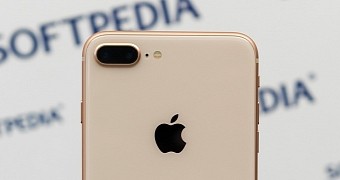
 14 DAY TRIAL //
14 DAY TRIAL // 